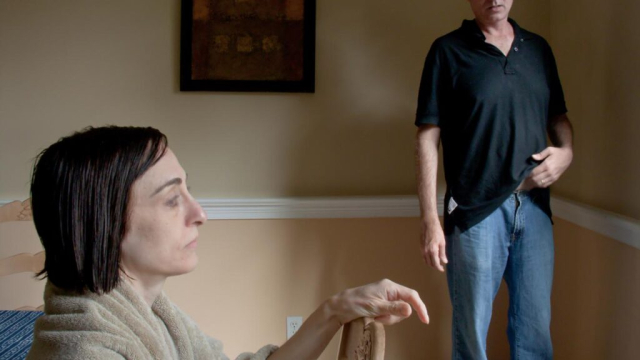I am honored to announce an upcoming lecture, “Self and Night: Photographs of Steve Giovinco,” at the William Alanson White Psychoanalytic Institute in New York on December 4, 2025.
Besides the opportunity to talk about my work in a different context, it’s a way to reflect on other elements and influences, such as an alignment between the Institute’s foundational philosophies and the conceptual drivers of my photographic practice, from my early investigations of human intimacy to my current long-term focus on nocturnal environmental landscapes in Greenland, and other remote sites.
THURSDAY, December 4, 2025, 1:30-3pm, In-person and On-line
Join us in-person at the William Alanson White Institute’s
Institute Library at 20 West 74th Street
or via zoom at: https://wawhite.zoom.us/j/8180152948?pwd=cDkrUTlMSndQendyZzhnc054c0tpQT09
The Institute and Interpersonal Psychoanalysis
Let’s delve into the Institute first. The William Alanson White Institute’s core philosophy is Interpersonal Psychoanalysis, an approach where central focus focuses on the social and cultural, as I understand it.
This perspective seems to veer from traditional therapy because it rejects the classical model of the analyst as a distant, objective “blank screen.” Instead, it emphasizes human qualities of the psychoanalyst and views the process as a continuous co-participation. A mutual, continuous, and unconscious influence between patient and analyst where interpersonal perspective emphasizes the mutuality of the therapeutic relationship, was seminal in the later development of Relational Psychoanalysis and continues to be applied to a broad range of clinical settings and problems of living.
The Interpersonal and the Intimate: The Couples Work
Pondering these concepts, I wonder if they align with my earlier photographic projects, such as On the Edge of Somewhere, which focus directly on the endlessly mysterious nature of human interactions.

These images, which are autobiographical and show how people live as a couple, are unflinching moments taken intuitively and spontaneously.
Most significantly, the method seems to mirror the interpersonal model by rejecting detached observation: the images are rarely if ever composed using the camera’s viewfinder. The resulting work is a product of co-participation, redramatization not objective observation, capturing unguarded moments and a lived vulnerability that can only be witnessed from within the relationship. Ultimately, the photos are an unflinching look at a couple’s life living in the world, and the inference of intimatmacy, yet despite the closeness, shows an emotional divide and the impossibility of a deep connection.
From the Interpersonal to the Environmental: The Night Landscapes
Some of the same intuitive methodology is in more more recent work. Here, the investigation expands from the human partner to the environment.
My long-term investigation into the poetics and politics of place is conducted through mysterious night landscapes, particularly at sites of irreversible environmental change.

Using durational, long-exposure photography in near-total darkness, I am tracing light, time, and change in a contested landscape undergoing rapid ecological collapse. With exposures ranging from one to eight hours and illuminated only by moonlight or the Aurora Borealis, the camera records a hidden world the human eye cannot see: strange and beautiful color distortions in the ice, subtle traces of human activity, and the epic, slow melting of the glacier rendered as blurred sections within an otherwise sharp frame.


Because I cannot use the viewfinder in the dark, I must frame each shot intuitively—a meditative and deeply personal process of “feeling” the image while standing alone for hours, as if in meditation.

Influenced by nineteenth-century painters like Frederic Church, the photographs of Atget and Brassaï, and childhood experiences with 16mm film, this approach moves beyond simple documentation to capture a feeling of loss, memory, and the inertia of impending environmental failure.
Conclusion: Photographing the Invisible
This methodology is fundamental to the work’s conceptual core. The night photography is explicitly designed to capture a hidden world that is often imperceptible–perhaps like a psychoanalyst works with a patient. This imaginary quality stems from two integrated elements of the process.
First, The Durational Exposure is the technical way of making the invisible visible. The camera’s long duration allows it to record what the human eye cannot see, including the subtle blurring of a glacier as it melts; as if photographing time. The resulting images appear natural but are impossible in reality, representing an abstracted view of nature.
Second, The Intuitive Process makes this imaginary aspect central to the act of creation. The photograph does not exist as a perceptible, visible reality at its inception but is only discovered later, which again, might parallel psychotherapy, where understanding reveals itself over time.
Third, I am deeply impacted by my surroundings in this state, and the process becomes a meditative and sometimes terrifying one. It fosters a deeply personal intimacy with the land where I feel simultaneously deeply connected to and disappearing into the world/night. It is only after this long, durational immersion that the invisible—the imperceptible light, the slow melt—is finally revealed as a tangible, idealized image.
